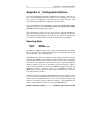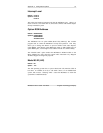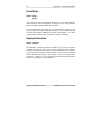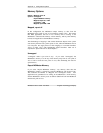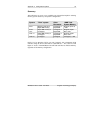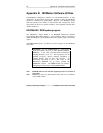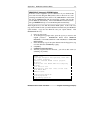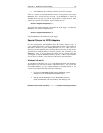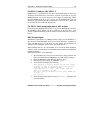
18 Appendix A Configuration Options
Kingston Technology Company MCMaster User’s Guide - Rev. B06
The disadvantage is that you can't have any other memory boards in the
system. If your system has only 1 megabyte on the planar, this is not a great
loss. However, if you have a lot invested in Micro Channel memory boards,
you probably want to keep using them. To use this other memory, you need to
select "Mapped" or "Unmapped."
Note: In some systems, the MCMaster cannot disable motherboard memory.
If the MCMaster signs on with "Hardware Rev 00.11," you have one of these
systems. In this case, the MCMaster behaves as it would in "Mapped, Report
All" mode except that the MCMaster uses only its own memory. The host
CPU (and any other busmasters) still see system memory first, followed by
MCMaster memory.
Mapped, report all, <16meg
This works the same as "Mapped, report all" except that system memory is
limited to 16 Megabytes regardless of how much memory is physically installed
in the system. This is required in a 32-bit system (e.g. Model 70, 80, 95) with
16-bit adapters installed.
The 16-bit version of the Micro Channel bus allows only 24 bits of addressing.
If a DMA device, such as the floppy disk controller, attempts to write past the
16MB boundary, errors can occur due to this limitation.
Unmapped, <16M
This works the same as "Unmapped," but with the same 16 Megabyte limit as
described above.
Mapped, report MM, <16meg
This is not the same as "Report MCMaster memory." In this mode, planar
memory is still visible from the host point of view, and the same advantages
and disadvantages of "Mapped, report all" apply.





